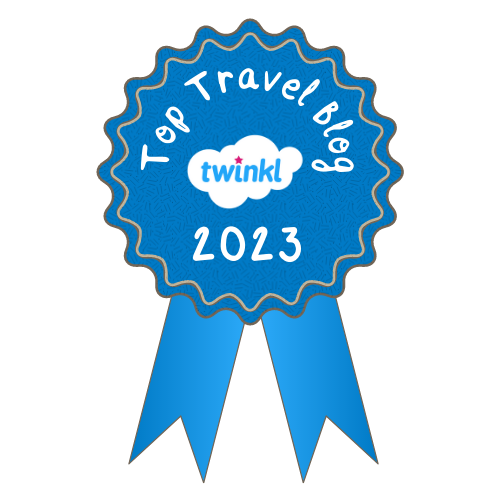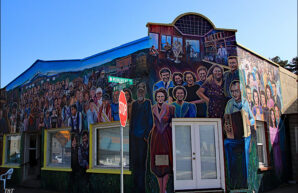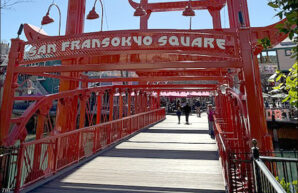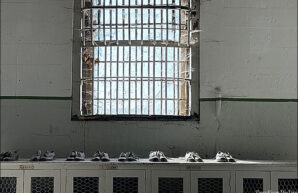It was a warm Thursday afternoon when Royal Nepal Airlines opened its doors to some eager passengers from the IT city of Bangalore. A pretty lady attired in the traditional chuba stood by the entrance with her palms held together in greeting and a `Namaste’ on her lips; that was my first glimpse of the Himalayan Country, I instantly knew I was going to like the place I was on my way to.
On my first morning in Nepal, I drew the curtains of the window by my bed – and what should I see: there before me was the Kathmandu valley and standing majestically in its midst was the world-famous Boudhnath Stupa. And to make the picture perfect, there was the rising sun in the backdrop. What a splendid beginning to my weeklong visit to Nepal.
We began our tour by taking the blessings of Lord Shiva at the Pashupathinath Temple. This shrine in the pagoda style, situated in the northeastern part of Kathmandu is open to Hindus alone. However, Buddhists are allowed to offer prayers to Lord Pashupathi. Situated beside the sacred Bhagmati River, this temple is also a place for performing last rites.
At the Pashupathinath temple, a devotee is supposed to pay respects to the Apsaras, Ashta Bhairava, Lal Ganesh and a few other deities in the temple complex before presenting himself before Lord Shiva, In the sanctorum sanctorum, is a three-foot high Shivling with four faces. One other specialty of this temple in Nepal, is that it is an Indian priest who does the pooja here. Scriptures say that the temple rites are to be performed by priests from the Indian States of Karnataka, Andhra Pradesh or Maharashtra. However for over 100 years now, the chief priest for Pashupathinath Temple has been from Karnataka.
After the visit to the temple, we moved to the city of Bhatkapur. Bhaktapur is an ancient township that was built during the 15th and 17th centuries. Founded by King Anand Dev, this town was divided into 24 traditional localities in an area of 5 square kilometers and is said to be built in the shape of a conch. This `city of devotees,’ as the name denotes, has four squares as its landmarks: The Dattatreya Square, Darbar Square, Potters’ Square and Taumadhi Tole. Other attractions in this city built in brick are the 5-storeyed Nyatapola Temple, the Golden Gate, the Peacock Window in Pujari Mutt and the palace with 55 windows. The palace was constructed during the reign of King Yakshya Malla in the 15th century AD and remodeled by King Bhupendra Malla in the 17th Century. Bhaktapur is also home to several gompas or Buddhist temples.
Towards evening we went on a winding drive to the enchanting hill station of Nagarkot, 30 Kilometres East of Kathmandu. The meandering roads and changing landscapes made the journey a truly picturesque one, with the scene turning form wheat fields to pine trees and finally when we were in Nagarkot we could see the tips of the conifers in the vegetation-covered hills around us. And in the far distance we spotted and snow-capped mountains. All through the winding road to scenic Nagarkot, we played hide and seek with the sun. When we finally arrived there, the sun had begun to slide behind the white mountains and we sought him again the next morning when he climbed up the mountains that were blanketed in mist.
After a drive back to the capital, we boarded Yeti Airlines, which transported us to Pokhara. There we checked into the Fishtail Lodge which gets its name from Machhapuchchre, the fishtail shaped peaks that are visible from there.
That afternoon we visited the Mountain Museum, which rendered many a lesson about mountain folk, their occupations and lifestyles, about mountains, peaks, mountaineers and the gear they used on their expeditions.
The next day Cosmic Air flew us through the mighty Himalayas to breathtaking Jomsom. Originally known as Dzongsam, Jomsom lies in the valley of Kali Gandhak and is at a height of 2800 metres above sea level. On touchdown at Jomsom, we were transferred to Jomsom Mountain Resort by the JMR Express Service, which is a tractor with seats on its trailer; just the vehicle needed for an uphill drive through the rugged road.
What did we do in Jomsom? We did a trek to Marpha village, a few kilometers away from the little town of Jomsom. The walk through the mountain roads, I learnt, is a must-experience and a pair of goggles, a must-have on the mountain trek in order to save your eyes from the violent and dusty winds that blew there, The walk was an eventful one punctuated with encounters with mountain goats, beasts of burden, and also local folk in Indian files, heads loaded with goods to be taken to Jomsom, And I must say that the best part of the hike was that we could see snow-capped mountains as far as our eyes could travel.
We walked for over three hours and arrived at the isolated Marpha village. One cannot enter the hamlet without peeping into the little Tibetan shop at the entrance. The owner of the shop, a Tibetan woman, cheerful and friendly, is ever ready to suggest what you could take back for family and friends and for yourself. If you pointed to a silver chain and asked how much it cost, she would simply say “Only 350- 400 ya,” with the sweetest smile and who would want to bargain with the good old lady?
At Marpha, we saw the Tibetan refugee camp, an apple farm and rows of small shops displaying things from jewellery to bags and liquor to organic eatables, At mid day we sojourned at a family-run wayside restaurant, to refuel ourselves with some typical Nepali lunch. We also found that there were so many such eateries at Marpha, which not only served traditional homemade food but also offered reasonably priced home stays.
After a visit to the apple farm and the distillery where the local apple brandy is prepared, we began our return walk to Jomsom. On our way back we couldn’t help stepping into the Tibetan lady’s shop once again to see her wares.
The following morning, we had to be early birds to catch the flight back to Pokhara, as Jomsom had air services only in the morning. Operations after 10 am are next to impossible in this high-altitude town because of the windy atmosphere there.
Back in Pokhara, we spent the morning boating on the calm waters of one of Nepal’s largest lakes the Phewa Tal. In the middle of this vast lake is a small island and on it a temple dedicated to the boar manifestation of goddess Ajima. After a visit to the island temple, we rowed back to our hotel. The day was a quiet one and we were in need of some adventure. So after lunch we decided to go on another trek, this time up the Andu Danda Hill to see for ourselves the famous World Peace Stupa that we had spotted when we were at the island temple.
The climb up the hill was quite a tiresome one. However at the end of the ascent, we had no regrets about the energy we had spent because we were rewarded with an awesome view of the serene Phewa Lake and Pokhara valley, all from the top of the hill. The Vishwa Shanthi Stupa as it is locally known, is the outcome of the dream of Nishidathsu Fuji, a Japanese man who was frustrated with the ways of the world and wanted to build a symbol of peace. The World Peace Stupa is a white pagoda-like structure, 35 metres in height and has four figures of Buddha, facing the cardinal directions.
That night we had dinner at a restaurant that provided traditional entertainment in the form of music and dance as we munched the last meal of the day. At the end of the programme, we got to play Nepalese by joining in the local dance.
From Pokhara we flew back to Nepal’s capital city. This time in Kathmandu, we visited the Swayambhunath Temple, did shopping at Thamel and also walked into Casino Nepal, where we sat at slot machines and Roulette tables and gambled to our heart’s content.
Swayambhunath Temple is a construction on a hillock that is over 70 metres in height and is above the level of capital Kathmandu. This structure with the `all seeing eyes’ of Buddha is believed to have been a pilgrimage destination for Buddhists ever since 5th century AD. The origin of Swayambhunath temple goes back to a belief that there was a lake in present day Kathmandu valley, and in it was a lotus that radiated a mysterious brilliance. In due course the flower became a place that people came to, in seek of enlightenment. Late a Bodhisatva called Manushri is said to have cut out a gorge and let the water drain away so that more people could get to the lotus. The flower is believed to have turned into a hill, while the light became the stupa. And this is how the temple came to be known as Swayambhu meaning `self-created.’
Another place we made a trip to in Kathmandu was the Hanuman Dhoka Darbar Square. A stroll through this old-world site was like being transported to the age of the Mallas of the 12th and 18th centuries. At the square we saw the palace built b King Pratap Malla way back in the 17th century. This palace, which was renovated many a time, still treasures the work of art and possessions of the Malla, Shah and Rana families.
The Kathmandu Durbar Square, as the square is also called, has a number of temples and courtyards. One of the temples there that should not be missed is the Kashtamantap, which is said to be made out of a single tree. South of Kashtamantap is a house called Silyan Sattal, which legends say, was built with the wood left over after the construction of Kashtamantap. At the Durbar Square there is also the Kumari Ghar, the residence of the living goddess taken to be the avatar of goddess Taleju.
With all varied attractions, Nepal is quite a place for a lover of nature, adventure and a shopping-crazy traveller. A tourist to Nepal could pick up a whole lot of artifacts, from Tibetan prayer wheels to Tibetan singing bowls, from Kukris to Laughing Buddhas and Pashmina shawls to handmade Nepali paper to take back as souvenirs.
As for me, even after take off from Tribhuvan Airport in Kathmandu, my tryst with the Himalayan Country did not come to and end. My mind still makes quick trips to Jomsom, Pokhara and Nagarkot, to the gusty road-to-Marpha, to the boating on serene Phewa Lake and to a string of other memories I carried with me from the beautiful Himalayan nation of Nepal.
* Originally appeared in Voyager’s World, a publication of Travel Media Networks, Bangalore

















That was a strike deep into the heart of the exotic Himalayan kingdom which seems to have soured of late, thanks to petty politicking. I understand it was one of your early escapades. No wonder you will cherish it like a diamond forever. Very well captured travelogue complete with emotions.
We went at time when things had begun getting bad and the travel industry (one of the prime industries of the nation)had taken a big hit. This was part of a familiarization campaign to revive the industry.
In fact when we were in Pokhra the second time, there was a 'strike' so we had to change travel plans for a day. But it was a pretty peaceful day and we still got things done that day. We couldn't be on the road but nobody was stopping us from moving about on a boat so we did some travelling by boat and a good hike, too 🙂
Nepal has immense potential as far as travel is concerned. It's sad that a lot of things are coming in the way, now.
Yeah USP, a trip I will cherish forever. 🙂
Your trysts with Nepal is spellbinding! The photos and your words 🙂
Thanks a ton, Devi. So glad you liked it. It was a very special trip. 🙂